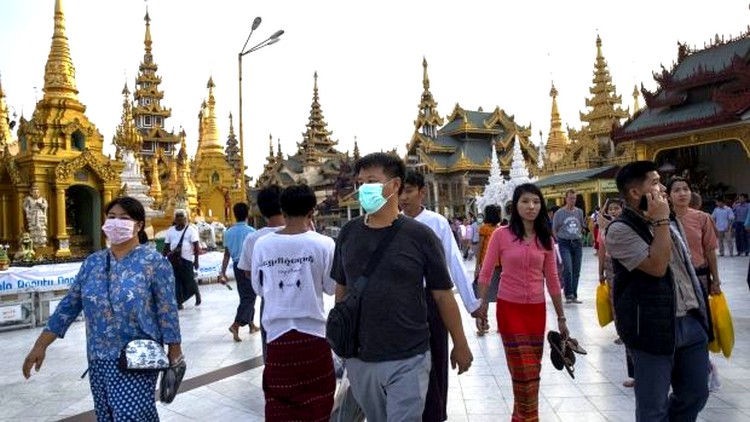
The Myanmar Tourist Board has confirmed that the majority of international tourists to the conflict-torn country are in fact Thai vacationers. The Board claims that around 15,000 tourists a month as an average land at Yangon international airport, the only entry point, although observers think the number is significantly inflated. According to the independent Mizzima news site, more than half are Thai nationals visiting cultural sites in Yangon or to attractions such as the Kyaikhiyoh historic pagoda. The estimate is supported by the fact that most daily international flights from and to Myanmar actually service Bangkok.
The Thai government still enjoys good relations with the coup leaders in Myanmar, particularly at senior army level, and there is even encouragement for Thai vacationers to book holidays there. Thai TV’s Channel 7, owned by the army, carries promotional material on behalf of the Myanmar hotel and tourist authorities. The military administration of senior general Min Aung Hlaing, the coup leader, tries to promote the country in Thailand through virtual shows, group discounts, colorful videos and even dance troupes.
But Myanmar’s tourist ambitions beyond Thailand have fallen on stony ground. The senior general has warm relations with Russia and has praised Putin as the guy ensuring global stability. In return, the coup leader has been made an honorary professor at Moscow’s military university. But Russians enjoy beach venues for a vacation and there are none located near the single airport which can receive tourists. Myanmar’s relations with China have cooled, thanks largely to perceived Chinese plunder of the country’s natural resources, and western tour group companies, based in Australia and UK, have shown no interest in resuming their former links with such a troubled and violent destination.
Travel gurus say Myanmar’s documentary entry requirements remain cumbersome whilst parts of the country, outside tourist districts, are closed or under curfew. A 10 days notice of intention is required to visit some of the more remote temple districts. The real tragedies of Myanmar are the 200,000 Myanmar economic refugees, mostly women and children and 72 percent of whom are undocumented, who have fled to emergency Thai camps at the border to escape bombing and military conflict. The last thing on their minds is the attempted revival of Myanmar’s international tourist industry.





